When the Pacific Centre took over Granville and Georgia Streets, it knocked out blocks of heritage buildings.
Story and photos from Vancouver Exposed: Searching for the City’s Hidden History
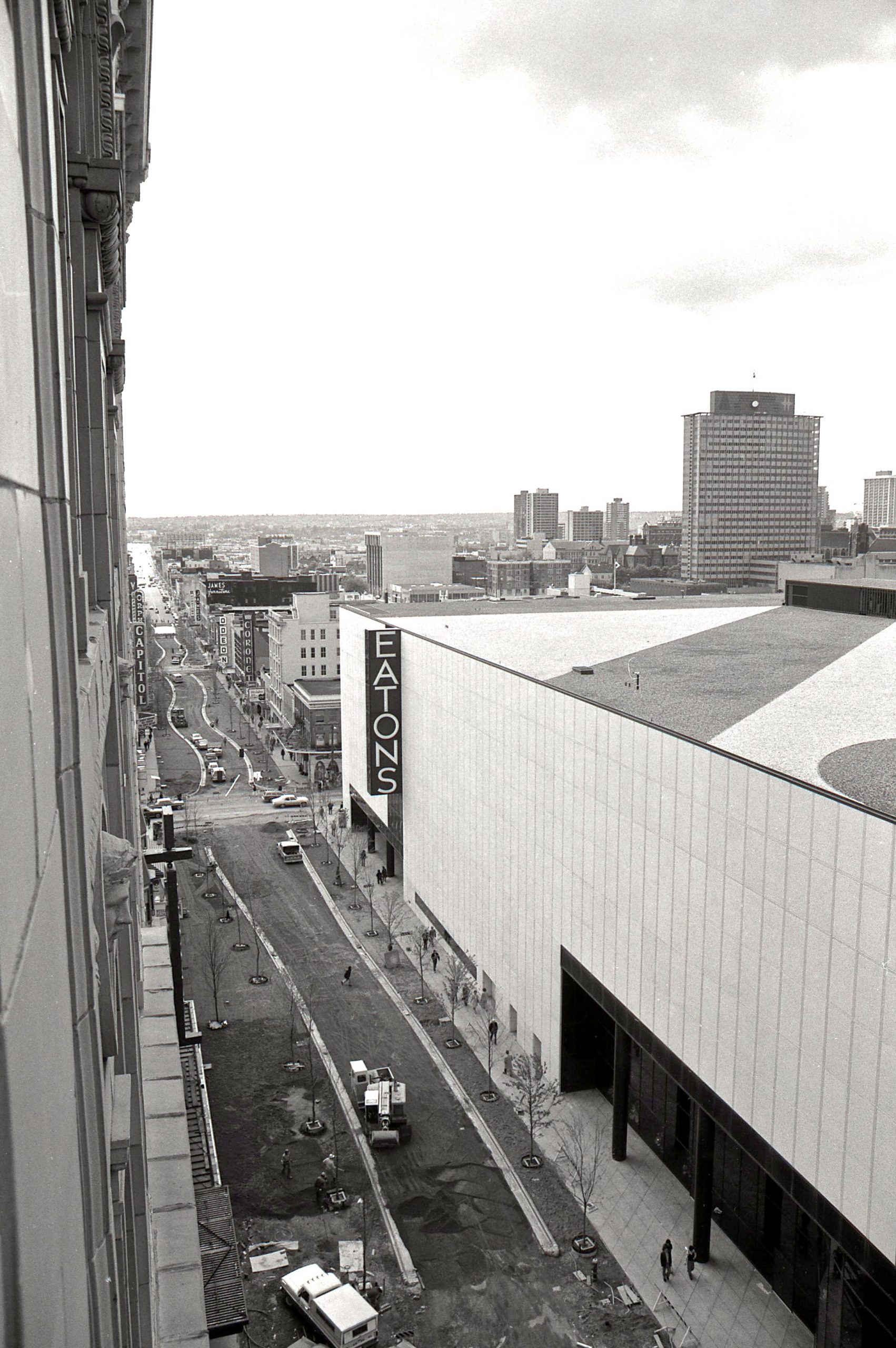
The Great White Urinal:
When I moved to Vancouver from Australia in the mid-1980s, locals had already had a dozen years to get used to Pacific Centre and the “Great White Urinal”—the name they’d not so affectionately dubbed the Eaton’s department store building. But it wasn’t until several years ago when I saw a 1924 photo showing the Strand Theatre, the Birks Building and the second Hotel Vancouver lined up along Georgia at Granville, that I realized how much we had lost.
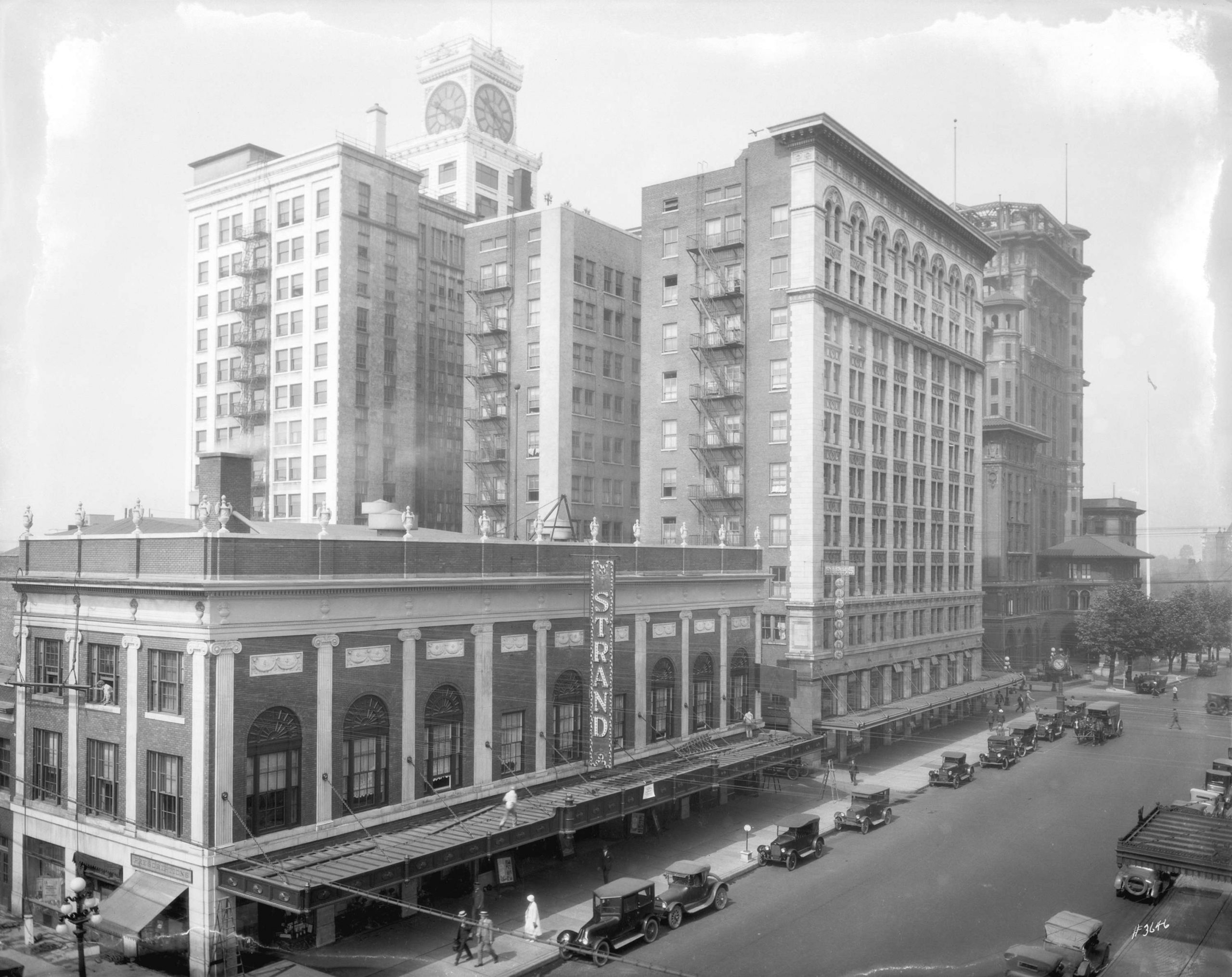
In the 1960s, city council wanted a redevelopment of downtown Vancouver with Georgia and Granville Streets as the epicentre. The fear was that the downtown core would lose business to suburban malls and the hope was that a new, modern shopping centre would attract people and breathe life back into that intersection. The thought was that this retail vibrancy would come through a superblock and underground parking that spread across several blocks.
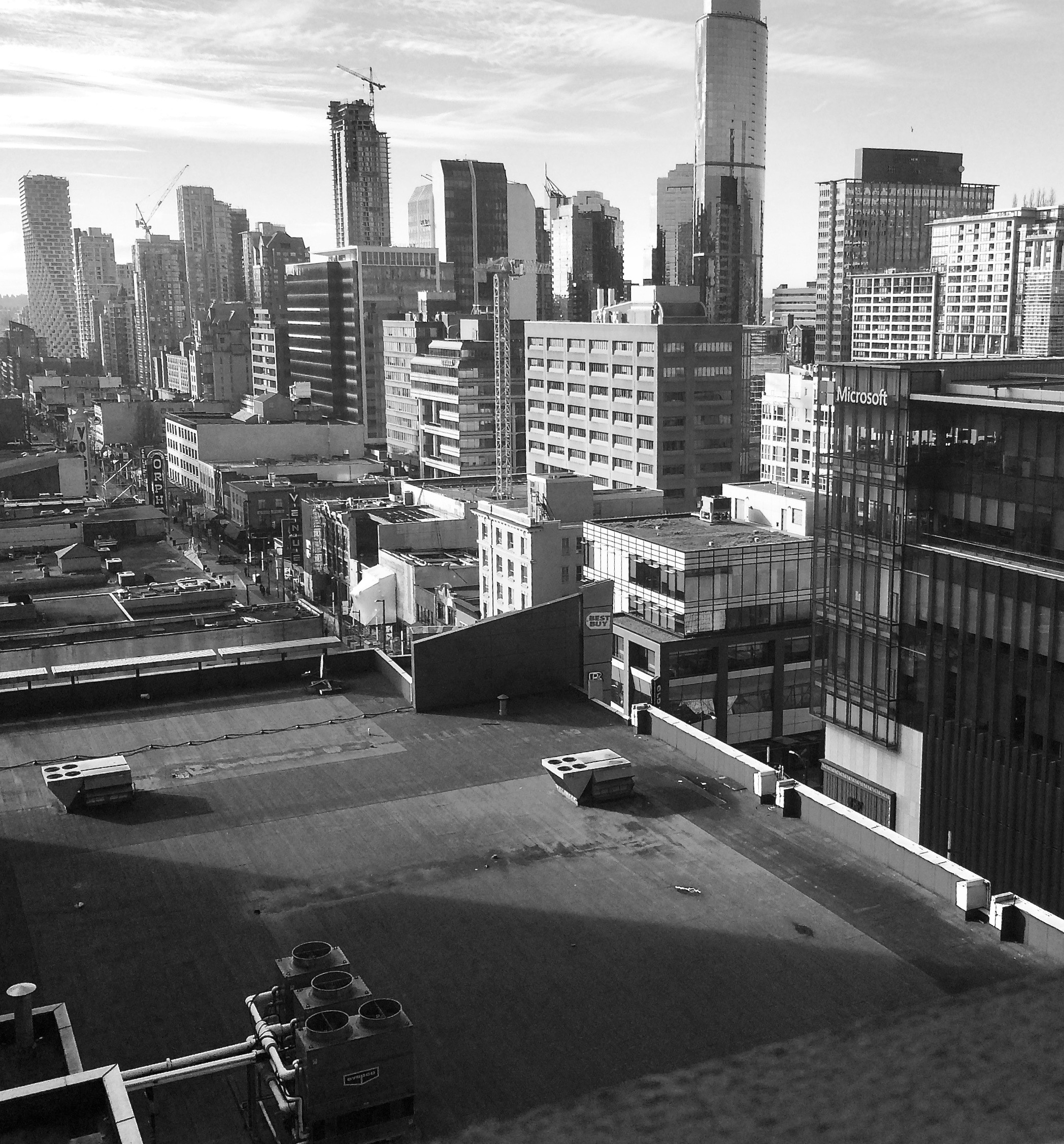
Superblock:
The superblock was made up of Block 52—bounded by Granville, Georgia, Howe and Robson; and Block 42—bounded by Granville, Georgia, Howe, and Dunsmuir. The problem was that the T. Eaton Company, which owned all of Block 52, wasn’t in a hurry to move from West Hastings (now SFU Harbour Centre) and a new department store was essential to anchor the proposed shopping mall.
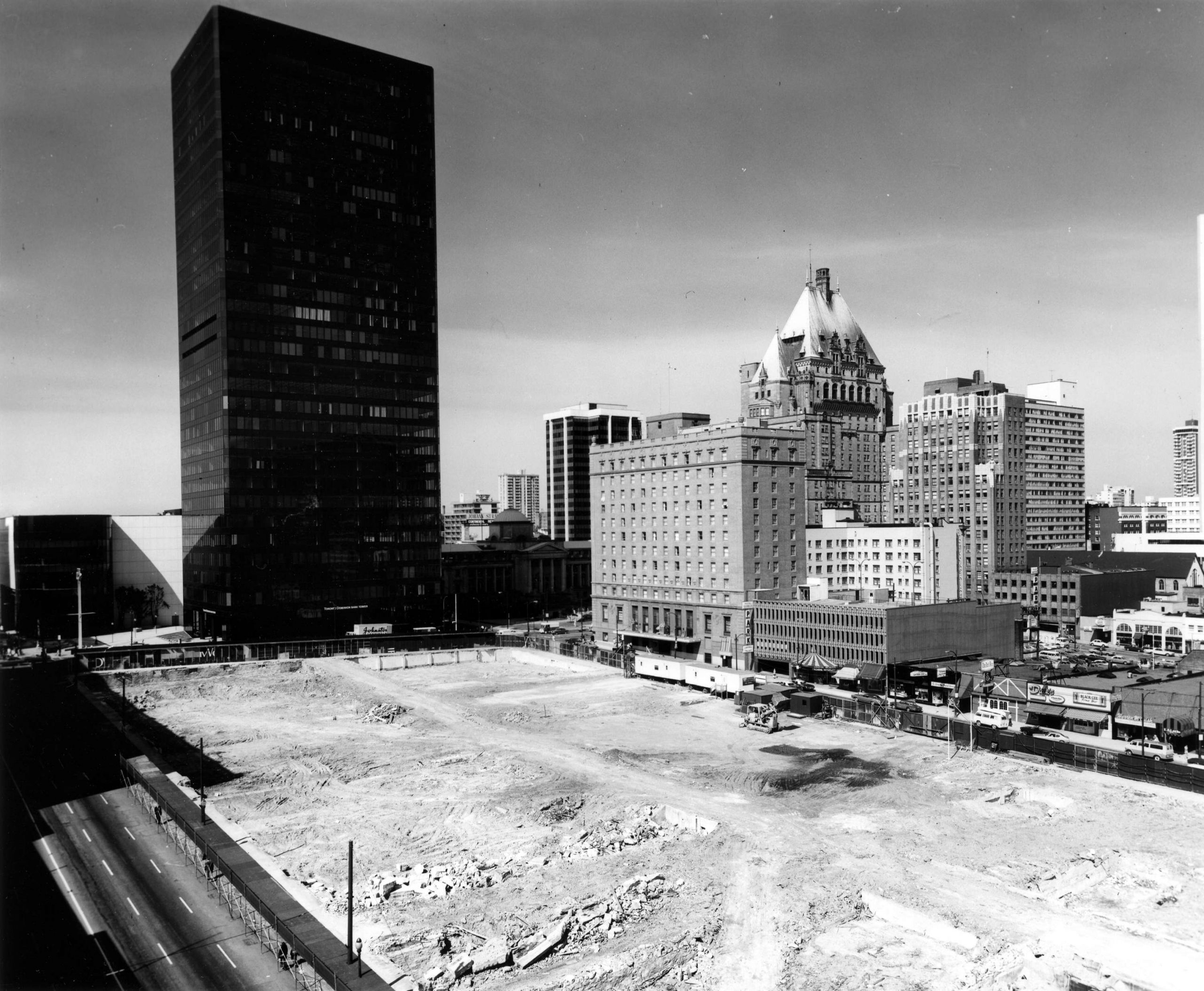
The other problem was 18 individual landowners owned Block 42 and none of them wanted to sell. By the fifth redevelopment report in July 1964, a frustrated city council led by Mayor William Rathie were figuring out ways to expropriate their land.
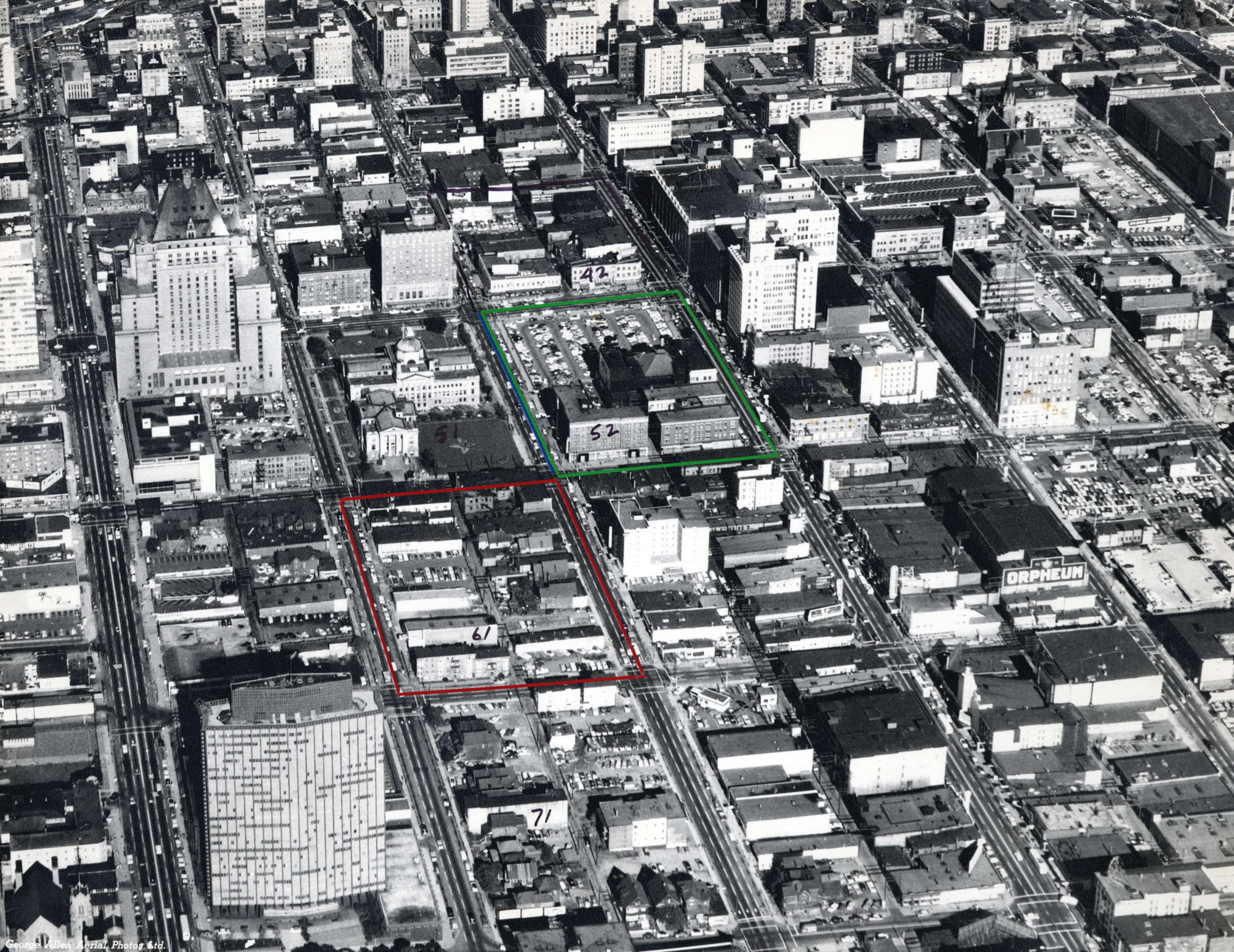
Vancouver’s Greatest Day:
In May 1968, the city held a plebiscite to allow them to buy up all the properties in Block 42 and 70 percent of voters agreed. The next mayor, Tom Campbell, told the press: “We’ve got a united city which wants a heart. Vancouver had only a past—today it has a future. This is Vancouver’s greatest day.”
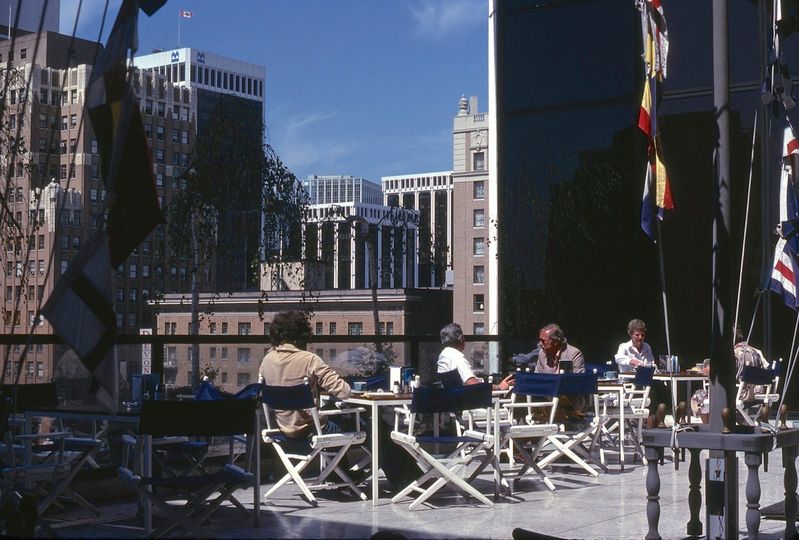
By 1974, we had the Pacific Centre and Vancouver Centre shopping malls, much of it as an underground bunker. We’d rid the streets of gorgeous brick buildings and gained the IBM tower, the former Four Seasons Hotel, the Scotia Tower and a 30-storey black glass monument to capitalism in the TD Tower. Rather than revitalize the Granville and Georgia intersection, we sucked the life right out of it.
Related:
The Second Hotel Vancouver: What were we thinking?
Vancouver’s missing heritage buildings
Vancouver Exposed: Searching for the City’s Hidden History
© All rights reserved. Unless otherwise indicated, all blog content copyright Eve Lazarus.




15 comments on “Pacific Centre”
Great article reminds me of my own memories of growing up in Vancouver in the late 1960s and early 1970s witnessing all the changes around downtown Vancouver. My parents worked downtown and my relatives owned a restaurant on Granville Street so I went downtown almost daily. I can recall all the demolitions, excavations and construction activity that seemed unending!!!!
The citys shame! What a backwards mind set to think what they did would work. The Black Tower still darkens the street scape, the food trucks belching fumes and noise with the silly chirping intersection things adding to the cacophony. Add the non stop sirens and its become unliveable in the downtown area.
Very good history Eve. This is one of the reasons I prefer the burbs and only come downtown if I have to. Who on earth wants to live in a tower downtown anywhere, not I, not we. I love the Sinclair Centre, not too tall and very rich with history.
Thanks Brad!
Love your stories of old Vancouver. To bad we couldn’t have keep some of it. Keep up the great work you’re doing
Thanks John, and agree, we could have done much better
It is King George High School, not St. George’s. I went to Dawson and KGHS in the late 50’s and early 60’s. I love the aerial archives photo showing the blocks outlined in colour. I already have a copy of it. I lived at 961 Howe St. in block 71, nor the Law Courts. That photo brings back so many memories of my youth, a time when living downtown was both vibrant and exciting, with lots of places to explore.
Yes it is! Thanks for the correction. Glad you liked the post. Eve
The roadway in the first photo was paved with concrete, and within a few years cracked and broke up into pieces. Had no one noticed that heavily loaded buses plied Granville Street? The second version had a deep foundation with lots of gravel, and lasted long enough to be replaced with the third and present day roadway.
The first street lights were low-level incandescent post top fixtures, which gave a mellow feel at night. They were replaced with glaring sodium vapour lights, and everything turned orange. We now have vertical fluorescent tubes as accent lights. Lots of colour from neon tubes would have recreated some of the lost history.
Looking at the before and after photos of Vancouver isnt easy. Almost all of the after shots show that mistakes were made and the unbridled development came at a cost. I worked downtown from 1974 until CP Transport was renovicted by EXPO 86. For those 12 years I shopped at Woodwards. We ate out at to many restaurants to list. The Only and the Marco Polo were two faves. We went for beers at the Lotus and the Grand Union and dozens of other bars.
Today we avoid Vancouver . Its dirty, its unsafe and has been proven to be a failed experiment. The social engineers have failed and continue to fail ie Stanley Park being coopted by a cycling lobby group.
oh how i miss the place i used to live there for 10 years and man just so many things that i forgot that were fun.
Thanks for this, Eve. Reading this in Australia and having just returned from Hobart and Launceston in Tasmania. It is so striking how those cities (and Sydney) have retained such a volume of heritage buildings. It appears there have been a few bungles, but compared to Vancouver and even Victoria the history and heritage is valued much higher there.
I’m from Melbourne, and still love visiting the city when I’m there. Gorgeous old buildings and lots of alleys.
[…] Pacific Centre […]
[…] Vancouver, the parking lot that replaced it, and a few decades later, the arrival of Eatons and the Pacific Centre. Three of Vancouver’s earliest office buildings designed by Bruce Price in the 1880s morphed […]